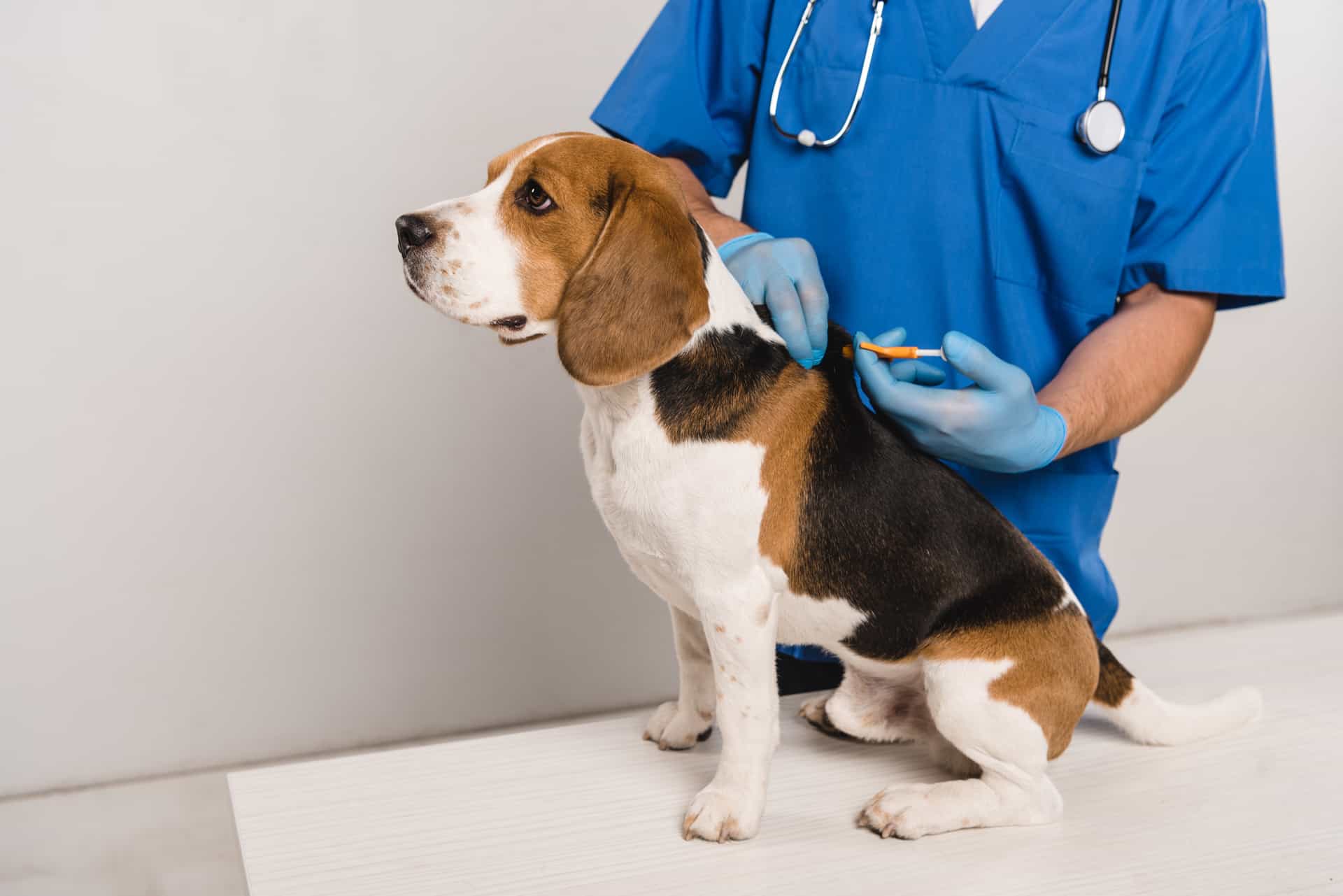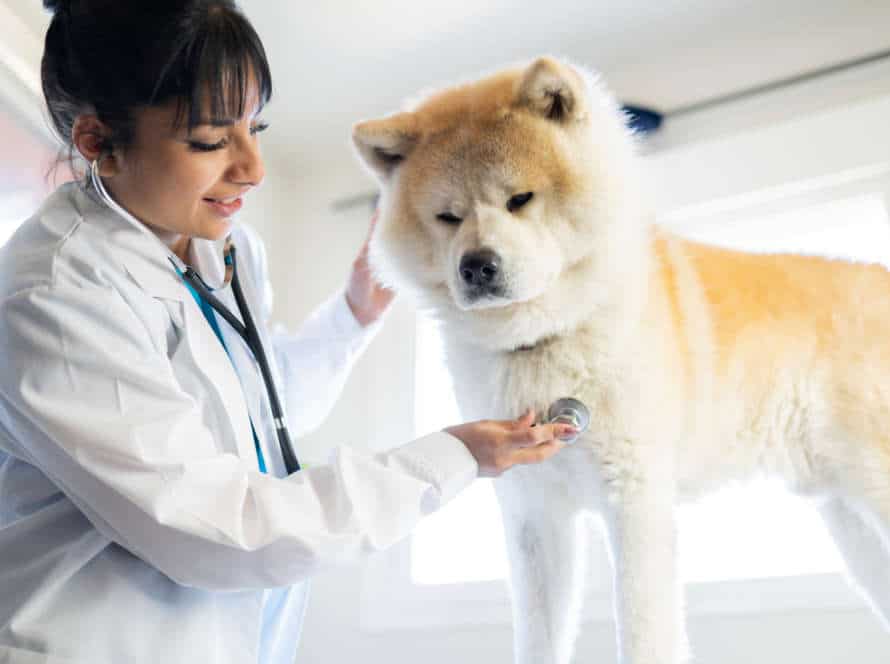How Microchipping Helps Reunite Lost Pets with Their Owners
Microchipping is an effective way to reunite lost pets with their owners. Inserting a tiny ID chip under the pet’s skin and programming it with contact info is the process. If a pet ever gets lost, animal control, shelters, and vet clinics can use a scanner to read the info and contact you.
Benefits of microchipping:
- More likely to find lost pets: Pet can’t lose microchip, so it boosts chances of finding them.
- Quick ID: Microchips can’t be taken off or ruined, so reliable and quick ID of pet.
- Affordable and long-lasting: Invest once, lasts pet’s lifetime. It’s cheap and keeps them safe.
Microchipping your pet is a simple, responsible act that brings peace of mind and saves lives.
What is Microchipping?
Microchipping is a form of pet ID. A tiny chip is implanted under the skin of your pet. It stores vital info like their name and contact details. You can access this info with a special scanner. This helps lost pets get reunited with their owners.
Let’s explore microchipping more deeply. How does it help?
Definition of Microchipping
Microchipping involves implanting a microcomputer chip, the size of a grain of rice, under a pet’s skin. The chip has a special identification number. A scanner can read it and connect it to the owner’s contact info.
If a pet gets lost, a shelter or vet clinic can scan the chip to identify it and contact the owner right away. It’s a secure way to reunite lost pets with their owners, that can’t be lost or removed. It’s essential to keep contact info up to date for a successful reunion.
How Microchips work
Microchipping is an action of inserting a tiny electronic chip under the skin of your pet. It contains a special code that can be scanned by a reader. So if your pet gets lost, you can be reunited with it! Here’s how:
- A vet or trained pro places the chip the size of a grain of rice under the pet’s neck.
- If your pet goes missing, you can contact a vet clinic or animal shelter to scan it using a handheld scanner.
- This scanner emits a radio frequency which activates the chip.
- The code is then shown on the scanner screen, allowing the scanner to identify who the pet belongs to.
Remember – keep your contact info up-to-date, so you can be contacted if your pet is found!
Importance of Microchips
Microchipping is a secure way to link lost pets with their owners. It’s a tiny electronic device injected under the skin, usually at the back of the neck. It includes the pet’s name, the owner’s contact details, and medical history. It can be scanned with a handheld scanner, commonly found at animal shelters, vet clinics, and rescue organizations.
Microchipping helps reunite pets with their owners quickly. Pet owners can increase the chances of being reunited by making sure their pet is microchipped. This one-time procedure can be done at any vet clinic.
Pro tip: Keep your contact info updated with the microchip registry. This increases the chances of being contacted if your pet is found.
The Benefits of Microchipping Your Pets
Microchip your pet! This ensures they’ll find their way back to you if they go missing. Inserting a small chip with your contact info? Easy-peasy! It’s usually painless, just an injection. Tons of benefits to microchipping. Let’s take a look!
Record Keeping
Microchipping is a great way to protect your pet. Keeping accurate records is key. Benefits of record-keeping include:
- Easy to identify your pet.
- Keep track of your pet’s health.
- Faster reunification, if your pet is lost.
Make sure you have your pet’s microchip number and any tags, plus your contact info. Update regularly.
Pro Tip: Include a picture ID in your records. Helps with identification.
Identification
Identifying your pet is essential to get them back if they get lost. Microchipping them can give a permanent and dependable form of identification that helps reunite pets with their owners. Here are some benefits of microchipping pets:
- Permanent ID: Unlike collars or tags, a microchip will stay with the pet throughout its life.
- Quick and Simple Reunion: With a microchip, the info about your pet can be easily found by a vet or animal shelter using a scanner.
- Affordable: Most pet owners can access and afford microchipping, avoiding expensive fees for lost pets.
- Peace of Mind: Microchipping your pet gives you the assurance that if it gets lost, there’s a greater chance of it being returned safely.
Remember to keep your contact info up-to-date with the microchip provider, so your pet can be reunited right away.
Health Tracking
Health tracking and microchipping are two different things. Tracking involves tech to monitor health. Microchipping helps reunite lost pets with owners. Tiny chips are implanted under the skin, with a unique code.
Below are the benefits:
- Increased chance of being reunited if lost.
- Quick identification of health records in emergencies.
- Easy travel to other countries as some require microchipping.
- Prevention of pet theft, as they are harder to sell.
In contrast, health tracking helps detect signs of illness early. Prompt treatment is ensured.
In conclusion, both offer different benefits. Microchipping is crucial for safety.
The Process of Microchipping
Microchipping: A simple, safe, and effective way to reunite lost pets with their owners! It’s a great process. Let’s break it down.
It provides a pet identification, even if they are lost. This makes it easy to find them. Microchipping ensures that pets can be reunited with their owners.
Before Microchipping
Understand microchipping your pet and how it can help you get back lost pets. Insert a tiny chip, size of a rice grain, underneath your pet’s skin. Usually between shoulder blades. The chip holds a special ID number, readable with a special scanner.
This number is in a national pet registry, linked to your contact info. If pet lost and taken to animal control/shelter, scanner reads the chip. Shelter or control facility finds your contact info. Reunite you with your pet. Microchipping is safe, fast and easy. Increases chances of finding your pet if they ever get lost.
The Microchipping Procedure
Microchipping is a quick and easy process. A tiny chip with a unique number is implanted under the pet’s skin, usually between the shoulder blades. This number can be scanned by a vet or animal shelter if the pet gets lost, to get your contact info.
Here’s how it works:
- Your pet will be held still, on a table or by a technician.
- The spot will be cleaned, and a sterile needle with the chip will be inserted.
- The chip will be injected just below the skin.
- Your pet may feel a pinch or sting, like a shot.
This chip can last up to 25 years without maintenance. Microchipping is a safe way to reunite lost pets with their owners.
Tip: Keep your contact info updated in the microchip database, so your pet can be found if they go missing.
After Microchipping
Microchipping your pet involves a tiny chip being inserted between their shoulder blades. This can be scanned to locate them if they get lost or stolen. Here’s what to expect:
- Mild discomfort or swelling around the injection site, usually disappearing within two days.
- Register the microchip with an online database and keep your contact info up-to-date. This will improve the odds of them finding you if they go missing.
- If they do disappear, tell local shelters and vet clinics. Give them your pet’s microchip number. This will help identify them if they’re found.
Microchipping can bring peace of mind. Ask your vet about the procedure and any aftercare instructions.
Microchipping Laws
Recently, laws for microchipping pets have been promoted more and more. In the US, more than 10 million pets get lost yearly. Microchipping is a great way to get them back safe. This article will explain the laws in different states and countries. It will also go over how microchipping can help owners and pets reunite.
Local Regulations
Laws on microchipping can help bring back lost pets to their owners.
This involves placing a tiny electronic chip under the pet’s skin, with the owner’s contact info. It increases the chances of a lost pet being reunited with its home.
Local municipalities often have laws that pet owners must get their pets microchipped or face fines/impounding. It’s important for pet owners to know the laws of their area and comply with the regulations, for their pet’s safety.
Pro tip: Update the microchip info with your contact info, if you move or change numbers. This helps find and return your pet quickly.
State Regulations
State laws about microchipping pets vary. To protect your pet, comply with these laws.
For example, some states need cats and dogs to be microchipped. Others only need dogs to be chipped.
Also, some states want the microchip registered with an agency or database. Others let you choose a different database.
Microchipping is an easy way to keep your pet safe. It’s also a legal requirement in many states. A microchip can help find your pet if it’s lost or stolen.
Pro Tip: Register the microchip with a trustworthy database. And make sure your contact info is up to date.
National Requirement
In lots of countries, they require pets like cats and dogs to have microchips. These microchips can help people find their pet if it gets lost. Here are the benefits of microchipping pets:
- Easy identification – Animal shelters, vets and other animal agencies can quickly identify the owner of the pet with a scan. This speeds up the reunion.
- Update contact info – Owners can tell the microchip provider their contact info at any time. This means a lost pet can find its owner easily and not have to be rehomed or euthanized.
- More chance of finding a lost pet – Microchips give an extra layer of protection in case the pet loses its collar or tag.
Pro tip: Keep your contact info up to date with the microchip provider for the best chance of a reunion.
What to Expect When Your Pet Is Lost
Worrying when your pet is missing is tough. You wonder if they’re ok and how to get them back. Fortunately, there’s pet microchipping. In this article, we’ll look at what to do if your pet is gone and how to increase the chances of finding them.
Searching for a Lost Pet
Losing a pet can be heartbreaking. Here are some steps to increase the chances of finding them:
- Search the local area
- Make sure your pet has a microchip
Post flyers, contact animal shelters and rescue centers within 50 miles. Use social media to spread the word.
This can help vets and shelters contact you. In addition, make sure your pet has a collar with an ID tag with your updated contact info.
Pro Tip: Have a recent photo of your pet handy for flyers and if people have seen your pet in the area.
Using Microchipping Technology
Microchipping your pet is a surefire way to increase your chances of finding them if they get lost. What happens if your pet is lost and microchipped?
- Someone finds them and takes them to a vet or shelter.
- They use a scanner to read the chip’s unique ID number.
- Then, the manufacturer contacts you with their whereabouts.
- You can then coordinate getting them back.
Remember to keep your contact info updated with the microchip manufacturer. Also, microchipping helps protect pets from being stolen, since their identity can be proven with the chip.
Reuniting with Your Pet
Losing a pet can be a heartbreaking event for both the pet and the owner. But, there are ways to get your furry friend back! Microchipping is one of the most reliable. Here’s what you should do if your pet is lost:
- Start your search ASAP. Put up flyers in your neighbourhood. Check animal shelters and vet clinics. Use social media to spread the word.
- Note down any sightings. Record the location and time of any sightings you hear about. Contact the person who saw them.
- Get your pet microchipped. If your pet is microchipped, contact the registry. Microchipping helps reunite lost pets with their owners by providing a permanent form of ID that can be scanned.
Don’t wait too long. Make sure you pet has a collar with an ID tag and is microchipped.
Additional Things You Can Do to Keep Your Pet Safe
Microchipping is an easy and dependable way to keep your furry companion out of danger and bring them back to you if they ever escape. It is a basic process and the chip is so tiny your pet won’t even recognize it!
Even though microchipping is crucial, there are many more things that you can do to keep your pet secure.
In this section, we will discuss the other choices available to keep your pet safe.
Using collars and identification tags
Collars and identification tags are an easy way to keep pets safe. Here’s how:
- Get a collar that fits but isn’t too tight.
- Add an ID tag with the pet’s name, your number, and any other contact info.
- Add a second tag if they have any medical conditions.
- Use harnesses and clasps if they have a habit of slipping out.
- Make sure they have their collar/tags when going outside or travelling.
- For added protection, microchipping is a great option.
Pro tip: Regularly check the collar fit and update tags if your contact info changes.
GPS trackers for pets
GPS trackers for pets have become popular for tracking their whereabouts and keeping them safe. But, it isn’t the only way. Here are some other methods to protect your pet and how microchipping can help:
- Get an engraved tag with your contact info on your pet’s collar, in case they get lost.
- When outside, keep them on a leash or in a fenced yard.
- Microchipping is a small RFID device injected under their skin. If they get lost and taken to a shelter or vet, they can be scanned for their microchip and you can be contacted. Interesting – In a study of over 7,700 stray animals, dogs without microchips were returned to their owners 21.9%, but, those with microchips were returned 52.2% of the time.
Pet monitoring cameras
Pet monitoring cameras give you peace of mind when you’re away from home, letting you keep an eye on your furry friends. Plus, there are other ways to keep them safe:
- Secure your home and yard, so your pet can’t escape or fall prey to break-ins.
- Store dangerous materials like cleaning supplies, medications, and chemicals in secure, inaccessible locations.
- Make sure your pet has proper identification, including a collar with tags and a microchip.
Speaking of microchips, these are a great way to increase your chances of being reunited with your pet if they get lost. Microchips have a unique ID number that can be read with a scanner, and this links them to you.
Pro tip: Register their microchip with a national database for even better chances of finding them if they wander off.
Pet insurance
Pet insurance is a must for pet owners who want to plan ahead for their pet’s healthcare bills. But there’s more you can do to protect your four-legged friend. Microchipping is a great option.
It’s a simple process. A small chip, about the size of a grain of rice, is inserted underneath the skin between the shoulder blades. It’s encoded with a unique ID that’s registered in a national pet recovery database.
If a lost pet is found, they can be identified by scanning the chip with a special handheld scanner. This reveals the pet parent’s contact info.
Microchipping is quick and painless, giving pet owners the assurance that their pet can be identified and returned.
Remember to update your pet’s microchip details with your current contact info so that reuniting with your pet is easy and fast.
Conclusion
To sum up, microchipping is a secure and successful way to make sure that lost pets can find their owners. It’s a fast and almost painless process. A unique ID chip is placed beneath the pet’s skin. This chip carries a single ID number that is linked to the pet owner’s contact info in a database.
If a pet is lost and identified, a scan of the microchip can quickly show the owner. This allows for a quick and joyous reunion. It is essential to update the database with the current contact details.
Overall, microchipping offers pet owners reassurance and a way to find their beloved pet if it gets lost.
Frequently Asked Questions
Q: What is microchipping?
A: Microchipping is a process of implanting a small device under the skin of a pet that contains a unique identification number.
Q: How does microchipping help with reuniting lost pets with their owners?
A: Microchipping helps reunite lost pets with their owners by providing a permanent form of identification that cannot be altered or removed. When a lost pet is found, a simple scan of the microchip can reveal the owner’s contact information.
Q: Is microchipping painful for pets?
A: Microchipping is a simple and quick procedure that does not require anesthesia. The injection is no more painful than a routine pet vaccination.
Q: How long does a microchip last?
A: Microchips are designed to last for the lifetime of a pet. The unique identification number is stored inside the microchip and cannot be altered or removed.
Q: Do all animal shelters and veterinary clinics have microchip scanners?
A: Yes, most animal shelters and veterinary clinics have microchip scanners. The technology used for microchipping is standardized, and any scanner can read any microchip, regardless of the brand.
Q: How much does it cost to microchip a pet?
A: The cost of microchipping varies by location and veterinary clinic. However, it is generally an affordable procedure that costs anywhere from $25 to $50.







